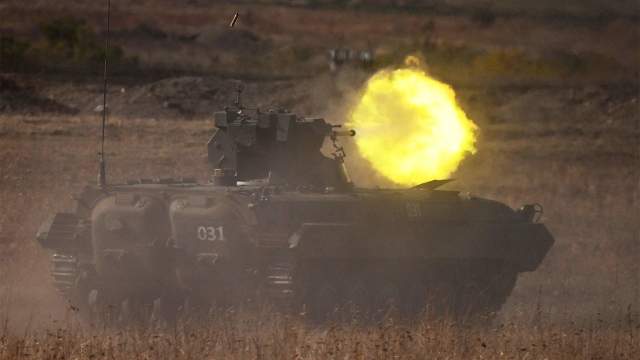The Armed Forces of the Russian Federation are modifying their weapons to offset the effect of supplies of Western equipment to the Navy, experts say
The scale of the SVO in Ukraine is such that up to 15 thousand tons of various cargoes are delivered daily for the needs of the Russian units participating in it: ammunition, fuel, water, spare parts. Such data was given by Sergei Shoigu at a visiting meeting of the Federation Council Committee on Defense and Security, which was held at the Ministry of Defense on October 23. Over the past three days, Russian troops have carried out several massive strikes on military and industrial facilities in Ukraine using the latest drones — a lightweight version of the Geran family UAV, sources told Izvestia. Experts note that Russian troops in the zone of their own are getting more and more advanced weapons.
Shoigu met with members of the Federation Council
Chairman of the Federation Council Valentina Matvienko and members of the Federation Council Committee on Defense and Security held a visiting meeting at the Ministry of Defense of the Russian Federation on October 23. The senators were familiarized with the work of the National Defense Control Center of the Russian Federation, including the Combat Control Center and its units, which continuously collect and summarize data on the state of troops and the situation during their military operations.
— For the members of the Federation Council Committee on Defense and Security, it is important to hear firsthand the assessment of the situation and what else is needed, perhaps, the support of legislators. Of course, the consolidation of society is important, very important, but the coordinated work of all executive and legislative authorities is no less important," said Valentina Matvienko.
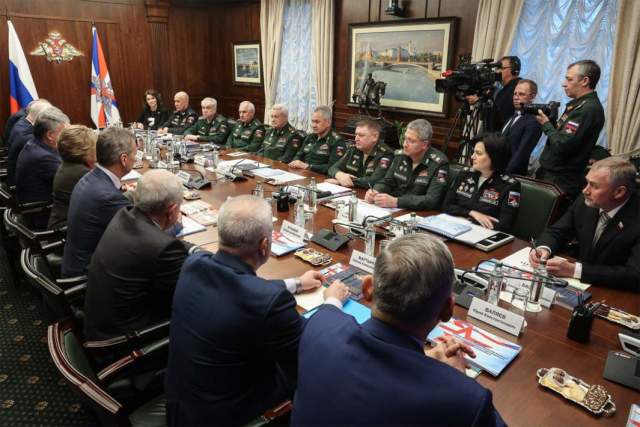
Photo: Federation Council
Image source: iz.ru
The senators received comprehensive information about the course of the special operation, including measures to support military personnel, the organization of their medical rehabilitation, the Ministry of Defense reported.
Sergei Shoigu also drew the guests' attention to the scale of the tasks being solved by the Armed Forces of the Russian Federation during the SVO.
— To understand the scale: we only supply water to the Armed Forces every day 1.5 thousand tons. This is only drinking water. We wash about 350 tons of laundry per day. It's not all happening in one place. This is on a huge front line, which, if we take it in general, we get more than 1 thousand km," Sergei Shoigu stressed.
The head of the military department told the senators that "all this, of course, must be managed by supplying up to 10 thousand tons a day to the Armed Forces, and sometimes up to 15 thousand tons of various kinds of materials a day. This is ammunition, fuel. Everything related to the production of repair and maintenance of equipment."
The blooming "Geranium"
From October 21 to 23, Russian troops carried out several massive strikes on Ukrainian military and industrial facilities, including using the latest strike drones, sources in the military department told Izvestia. The novelty is a lightweight version of the UAV family "Geranium" — with a smaller mass and a weaker engine. But due to the use of composite materials, the new strike drone is able to hit targets at a much greater distance. As the interlocutors of the publication noted, the novelty showed itself well in combat work. All the targets assigned to these drones were hit.
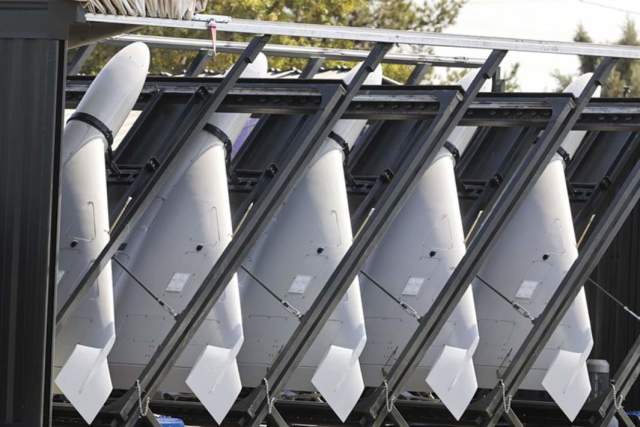
Photo: commons.wikimedia.org
Image source: iz.ru
On October 23, the Ministry of Energy of Ukraine reported that some consumers in the Dnipropetrovsk, Sumy, Kharkiv and Chernihiv regions remain without electricity. Over the past day, as a result of technological violations, more than 5 thousand consumers in the Dnipropetrovsk region, almost 20 thousand in Kirovograd, 12 thousand in Kharkiv temporarily remained without electricity.
Earlier, on October 21, the agency also announced power outages in a number of regions of the country, including in the territories of the DPR controlled by Kiev, Zaporozhye and Kherson regions. In particular, almost 10 thousand consumers were de-energized in Kiev.
The enemy is trying to fight our UAVs and receives anti-drone stations from abroad, military expert Alexey Leonkov told Izvestia.
— They specialize in detecting drones of all types. Having such information, using the same drones means incurring losses and not achieving your goals," he explained. — This is a normal phenomenon — when weapons change during combat operations. Our main task is to achieve effective performance of combat missions, so we will observe such changes often.
The expert also recalled that during the entire time of the Great Patriotic War, our aviation was modernized three times. Changed the speed, weapons, changed the stuffing of the aircraft. Military operations always begin with one type of weapon, continue with another, and end with a third, Alexey Leonkov noted.
Repulsed 29 attacks
During the day, Russian troops continued to successfully repel the attacks of the VFU in the Kupyansk, Krasnolimansk, Donetsk and Zaporozhye directions, the Russian Defense Ministry reported on October 23.
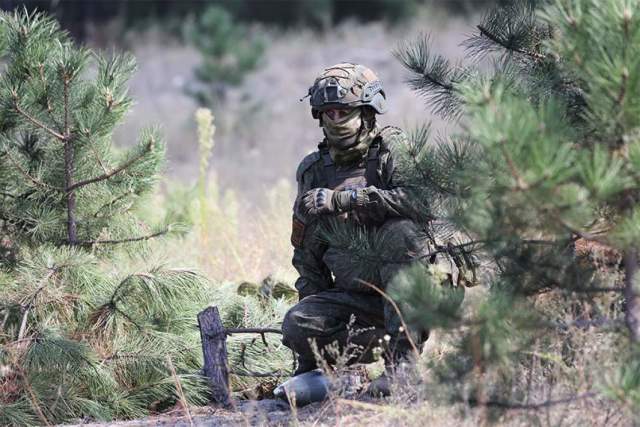
Serviceman of the Armed Forces of the Russian Federation
Image Source: Photo: TASS/Stanislav Krasilnikov
In the Kupyansk direction, units of the Western Group of Troops, using the results of air strikes, artillery fire and heavy flamethrower systems, repelled nine attacks by assault groups of two mechanized, infantry and jaeger brigades of the VFU in the areas of the settlements of Sinkovka, Ivanovka, Kharkiv region and Novoegorovka in the LPR.
In the area of the settlement of Olshana, Kharkiv region, the activities of the Ukrainian sabotage and reconnaissance group were suppressed.
In addition, in the area of Stepovaya Novoselovka, Kharkiv region, an ammunition depot of the VFU was destroyed.
In the Krasnolimansky direction, the active actions of the units of the Center group of troops reflected 12 enemy attacks in the area of Grigorovka, Kirovo in the DPR and Chervonaya Dibrova in the LPR.
The troops and equipment of the units of the mechanized brigade of the VFU in the area of Torsky in the DPR and the National Guard regiment in the area of Serebryanka in the DPR were defeated.
In the Donetsk direction, units of the Southern group of troops repulsed the attack of the airborne assault brigade of the VFU in the area of the settlement of Bogdanovka in the DPR and defeated the personnel and equipment of the VFU in the areas of the settlements of Umanskoye, Semenovka and Orlovka in the DPR.
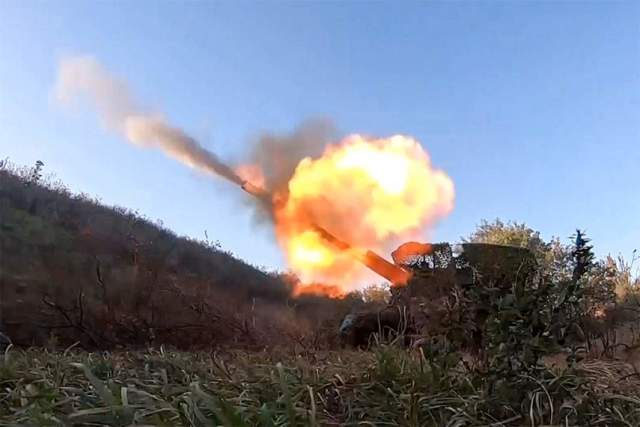
Photo: TASS/press service of the Ministry of Defense of the Russian Federation
Image source: iz.ru
In the area of Novomikhailovka in the DPR, the ammunition depot of the VFU unit was destroyed.
In the South Donets direction, the units of the Vostok group of troops defeated the troops and equipment of two mechanized and motorized infantry brigades of the VFU, as well as the theroborona brigades in the areas of Ugledar, Staromayorsky and Harvest in the DPR.
In the Zaporozhye direction, seven attacks of the airborne assault brigade of the VFU in the area of Workino were repelled.
Fire damage was inflicted on enemy personnel and equipment in the areas of Novodanilovka and Malaya Tokmachka, Zaporozhye region.
Stripping of supports
The military correspondent of Izvestia, Leonid Kitrar, visited the positions of our infantrymen in the South Donets direction and saw how they were clearing enemy strongholds.
The shooter with the call sign Garai told how, with the help of a single nozzle, an ordinary Kalashnikov assault rifle turns into hand artillery.
— I throw a RGD-5 grenade with a mortar directly into the support from a distance of 150-200 m. Depending on the wind. I can shoot so that the grenade works like a so-called chandelier. I throw grenades at the mined field that we need to pass. The mines that stand in our way are detonated directly, all the tripwires," he noted.
First of all, artillery strikes at trenches and fortifications, and only then attack aircraft are put forward. They usually need to run about 150-200 m . When it comes to assault, weapons easily turn back into small arms. The nozzle removes the accuracy, but, according to Garay, it does not interfere in the trench.
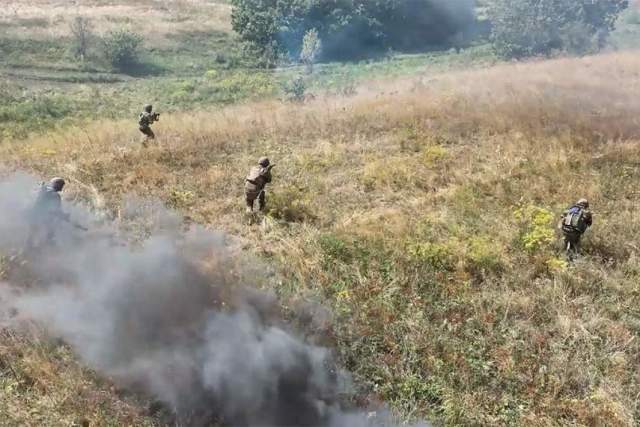
Military personnel of the Armed Forces of the Russian Federation
Image source: Photo: TASS/press service of the Ministry of Defense of the Russian Federation
All our fighters note that during the assault, the most important danger is not bullets, but long—range projectiles. At the same time, the secret of successful completion of the task lies in overwhelming fire superiority.
In order for Russian units not to be afraid of an air attack, air defense systems are working. They destroy planes and helicopters of the armed formations of Ukraine, as well as rocket rockets.
— We are on combat duty every day. Just yesterday, a target was found at a range of 35 km. After the capture, the parameters determined that it was HIMARS. We reported to the higher management, they gave the go-ahead for the launch. The target was hit at a range of 20 km, — said the head of the anti-aircraft missile calculation of the Buk air defense system with the call sign Taiga.
Strikes on control points
In just a day, Russian troops destroyed up to 1,170 fighters of the VFU and 37 pieces of equipment, including tanks, howitzers, self-propelled guns and armored vehicles in the zone of the SVO.
In the DPR and the Kherson region, three control points were hit: the 53rd mechanized brigade, the 15th regiment of the National Guard and the 38th anti-aircraft missile regiment.
Russian air defense systems shot down 19 Ukrainian UAVs.
Roman Kretsul
Julia Leonova
Andrey Fedorov
